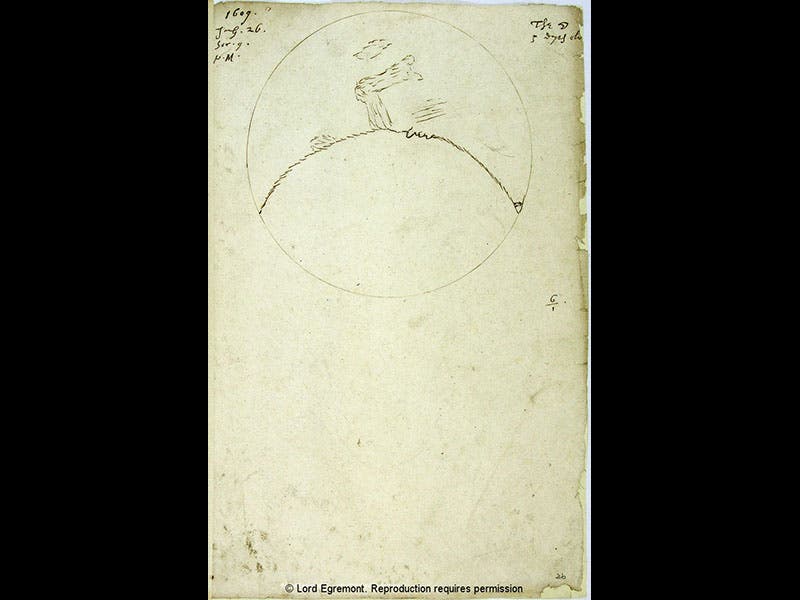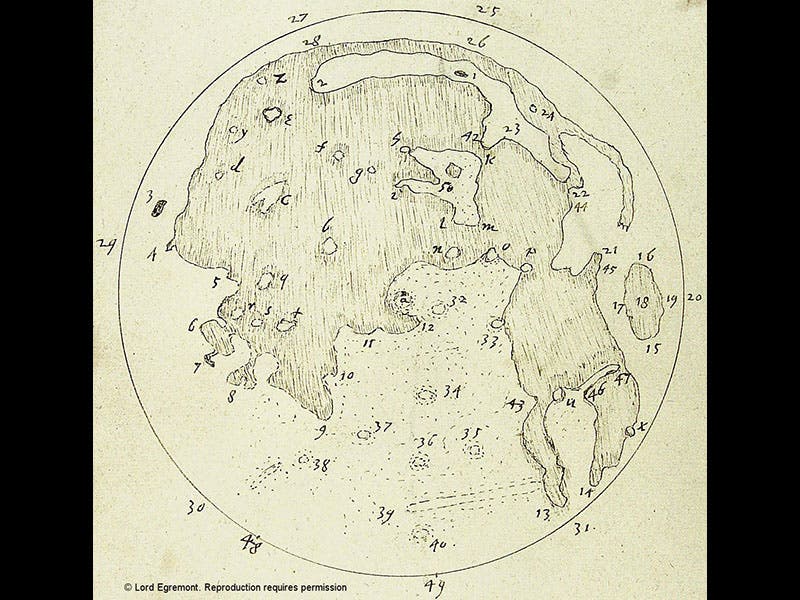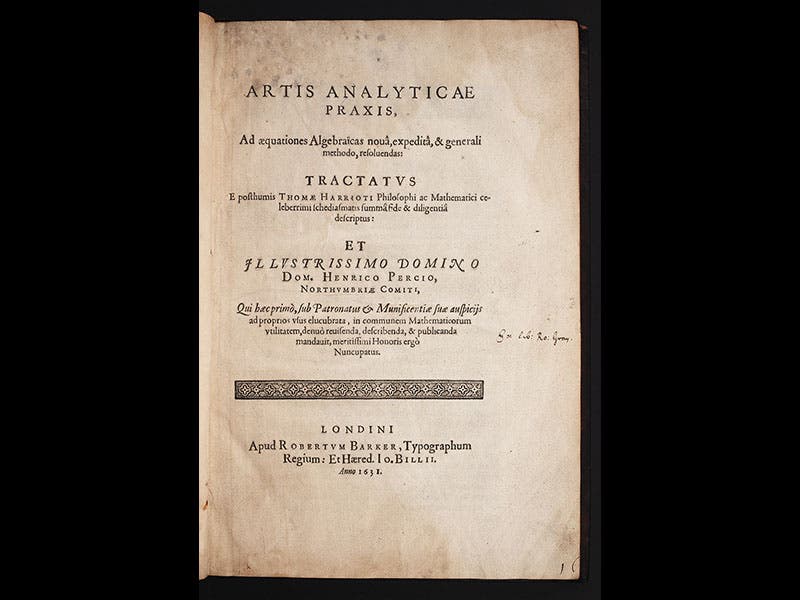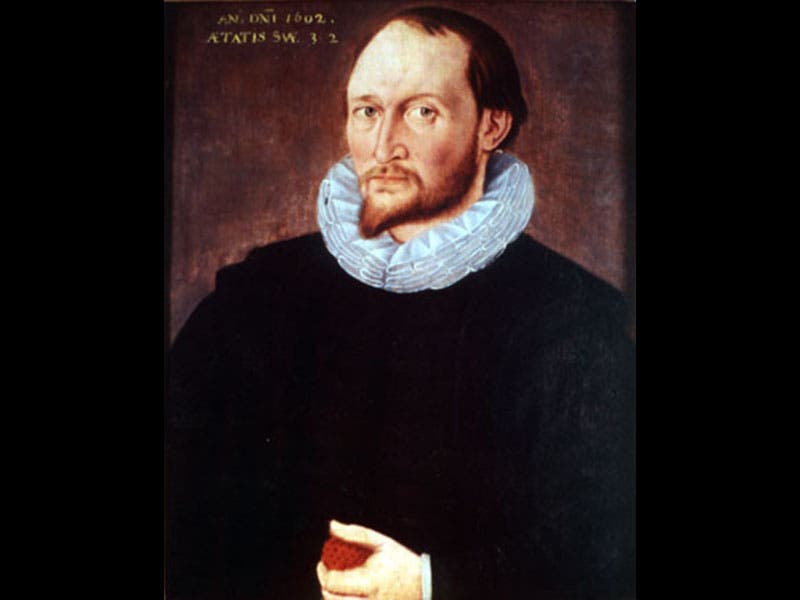Scientist of the Day - Thomas Harriot
Thomas Harriot, an English mathematician and cartographer, died July 2, 1621, at about age 61. On July 26, 1609, Harriot made a sketch of the moon, as viewed through his telescope (see first image above). This was the first documented drawing of any astronomical object seen through a telescope, anticipating Galileo's first watercolors of the moon by over four months. Granted, it wasn't much of a drawing, with just a few features shown, but it is a first. Harriot later did several other sketches, and he even constructed a map (second image), but none of his lunar artwork was ever published, so he is often overlooked when we talk about the first telescopic astronomers.
Hariot also did important work in algebra, but he didn’t publish that either. It wasn’t until after his death that his important papers on algebra were collected and published. The Artis analyticae praxis (1631) is a very scarce book, and we are happy to have a copy in our History of Science Collection (third image).
Even a portrait of Harriot is hard to come by. There is one at Trinity College, Oxford, that purports to depict Harriot, but the age given on the portrait is off by 10 years. We can only hope that the artist did a better job of capturing Harriot’s likeness than his age (fourth image).
Dr. William B. Ashworth, Jr., Consultant for the History of Science, Linda Hall Library and Associate Professor, Department of History, University of Missouri-Kansas City. Comments or corrections are welcome; please direct to ashworthw@umkc.edu.










